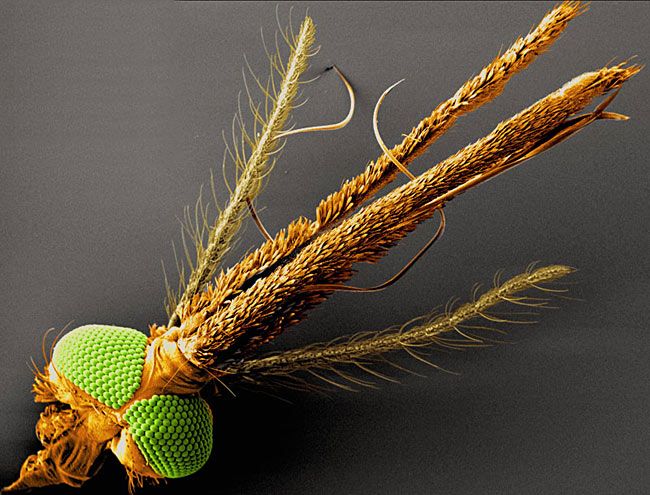The Modern Fight Against an Ancient Killing Machine

They come at night, just when the family is settling down for dinner or sleep. The only warning is an irritating whine, but sometimes there's no sound at all, just a pinch and later an itch. And much later the fevers, shivering, and perhaps death. Malaria, the disease caused by a parasite delivered in a mosquito bite, is one of the greatest killers of our time, which is why scientists are working very hard, and with various methods, to develop a vaccine against this disease. But oddly enough, some people are already naturally protected against malaria and the story of their protection is a favorite of anthropologists because we know the tale from genes to culture. The Plasmodium parasite that results in malaria has been a human killing machine for a very long time, and our ancient ancestors are somewhat to blame. Agriculture spread to Africa from the Middle East about 5,000 years ago, and this new form of subsistence was a perfect breeding ground for mosquitoes. In tropical climates, large open spaces cleared for crops collect water. Mosquitoes, of course, love standing water. Also, there were fewer domesticated animals around in Africa at that time, so the mosquitoes went for the humans. But not everyone ended up with malaria, and even those who did often survived if they were already armed with a critical and protective substitution of one base in the human genome. Hemoglobin is the protein in red blood cells that carries oxygen through the body. Some people carry an alternate form of the gene for hemoglobin, called the sickling gene, that causes red blood cells to bend into a crescent, especially when faced with Plasmodium. The bent cells are not good hosts for the parasite and they release potassium, which kills off the parasite. Sounds like a good idea to have defective red blood cells and indeed people carrying only one sickling gene are somewhat protected against the ravages of malaria. But the sickle cell trait also has a dark side—those with two sickling genes have sickle cell anemia and are at great risk for grave illness; they have too many sickling red blood cells for the body to operate normally. But the trait is maintained in the human population because it helps more people than it harms. But the story of sickle cell, malaria and human culture doesn't stop there. As humankind moved out of Africa, the sickling gene came with us, causing serious health issues in places where there is no slash and burn agriculture, no mosquitoes bearing Plasmodium. This gene is, for some places, historical genetic baggage that should have been lost en route, but evolution doesn't work that fast, or that accurately. More disturbing, even in areas where sickling hemoglobin might provide some protection against malaria, it's simply not enough protection. According to the Centers for Disease Control, 350 million to 500 million cases of malaria are reported each year worldwide and 1 million people die each year, mostly children. And no wonder—41 percent of humankind lives in places where malaria is rampant. Our genome has tried to protect us from this killer, but now it’s the job of culture, in the form of science, to take up the gauntlet. Meredith F. Small is an anthropologist at Cornell University. She is also the author of "Our Babies, Ourselves; How Biology and Culture Shape the Way We Parent" (link) and "The Culture of Our Discontent; Beyond the Medical Model of Mental Illness" (link).
- Video: Bird Flu Pandemic: Will It Happen?
- Top 10 Mysterious Diseases
- 10 Things You Didn't Know About You
Sign up for the Live Science daily newsletter now
Get the world’s most fascinating discoveries delivered straight to your inbox.













